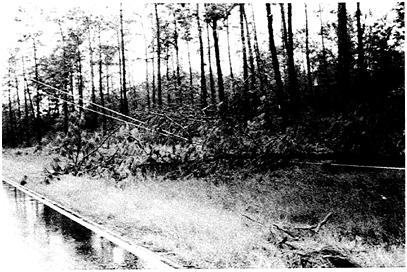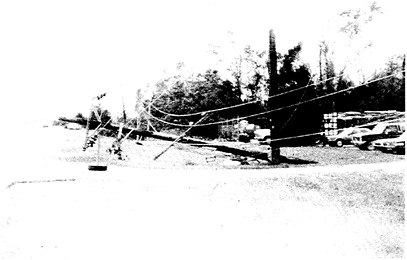14
Lifelines
Ronald A. Cook, University of Florida, Gainesville
INTRODUCTION
Power supply, transportation, communications, and water/wastewater systems were significantly affected by Hurricane Hugo. In general, Hugo caused severe damage to lifelines on barrier islands from just south of Charleston to the North Carolina border, and major damage to lifelines on the mainland in both South and North Carolina.
Figure 14-1 shows a location on Pawleys Island, South Carolina, where the roadway, electric lines, underground telephone lines, and water and sewer lines were destroyed by Hugo. Although this was an extreme case, similar damages occurred throughout the South Carolina barrier islands. The damage to lifelines on the barrier
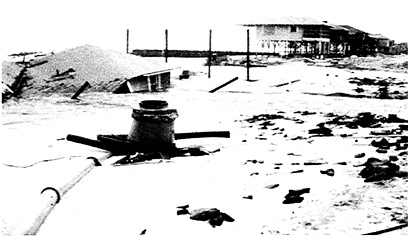
FIGURE 14-1 Destruction of roadway, electric lines, underground telephone lines, and water and sewer lines on the south end of Payleys Island.
islands was so extensive that most systems needed major repair, and the electric power supply system needed to be completely rebuilt. On Folly Island, a washed out roadway severed a natural gas supply line. Since the gas had been shut off prior to the storm, a dangerous situation was avoided. Damage to the natural gas supply system was generally confined to the barrier islands.
Probably the most notable aspect of the lifeline damage caused by Hugo was the extent of damage to mainland systems. Although damage throughout the coastal region is addressed, the primary focus in the following discussion is directed toward damages on the mainland.
POWER SUPPLY SYSTEMS
The most significant damage to lifeline systems was to the electric power supply systems throughout most of South Carolina and much of North Carolina. Power outages adversely affected the operation of other critical lifelines, such as transportation and communications systems, and the operation of water and wastewater facilities. On the barrier islands, both the aboveground electric distribution lines and the feeder lines from the mainland were destroyed by a combination of wind, windblown debris, and storm surge. On the mainland, wind and windblown debris (particularly falling trees) destroyed much of the power supply system.
Unlike other storms, Hugo maintained significant winds far inland. At the Charlotte airport, approximately 180 mi inland from Hugo' s landfall, 83-mph winds were recorded. Figure 14-2 shows the extent of damage to electric power supply systems resulting from Hugo. The damage area shown in Figure 14-2 incorporates about 25,000 mi2 and illustrates the extent of downed power lines.
In many cases, electric utilities had to rebuild systems as opposed to just repairing them. Approximately 1.5 million customers were without power after the storm. After 8 days, only 25 percent of the customers in the Charleston area had power. In many cases, it was 2 to 3 weeks before service was restored. The magnitude of destruction to the electric power infrastructure caused severe hardships on residents and hampered the recovery effort.
Electric utilities had adequate pre-storm plans to cope with the expected damage from a hurricane of Hugo's strength. The problem seems to be that the damages caused by Hugo were far in excess of what was expected. Total damages to electric power supply systems were estimated to be $400 million.
Power Plants and Substations
Very little damage was sustained by power plants and substations. At one power plant in South Carolina, the cooling towers were damaged and the plant was forced

FIGURE 14-2 Extent of damage to electric power supply systems.
to shut down until regulatory permission was granted to discharge cooling water above normal temperatures.
Transmission Lines
One of the most significant aspects of Hugo's effect on lifelines was the amount of damage to transmission lines and transmission-line support structures. Transmission lines and their supports are theoretically designed to sustain hurricane-force winds in excess of those recorded during Hugo.
Transmission lines with metal support structures remained intact, while those constructed of timber were heavily damaged. In some cases, the actual timber poles were broken, but the dominant failure mode seemed to be a foundation failure due to insufficient embedment of the poles. Several utility personnel reported that the ground was saturated prior to the storm. Figure 14-3 shows a timber transmission line structure leaning against a highway entrance ramp in Charleston.
Damages to transmission lines caused significant delay in restoring power to the affected areas. In the absence of transmission-line failure, work could have begun immediately on distribution lines. It was necessary to spend several days repairing downed transmission-lines before work could begin on the distribution system. In the Charleston area, which had extensive transmission-line damage, it took 3 days to restore power to hospitals, 6 days to the water treatment plant, and 7 days to the wastewater treatment plant. Hospitals, water treatment plants, and wastewater
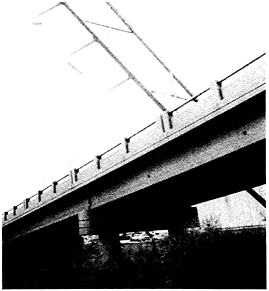
FIGURE 14-3 Timber transmission line support structure leaning against roadway in Charleston.
treatment plants have priority numbers 1, 2, and 3, respectively, for reestablishing electric supply. Lengthy delays in restoring power were attributed to transmission-line failure.
Distribution Lines
Distribution systems from the South Carolina coast to about 50 mi north of Hickory, North Carolina, were essentially destroyed by the storm. Several utility personnel commented that their job was not to repair the system, as had been anticipated, but to rebuild the distribution system completely. On the mainland, the major damage to the distribution system was caused by fallen trees. The areas of South and North Carolina impacted by Hugo were heavily wooded with pine trees. These trees typically snapped off about 10 to 20 feet above the ground and brought down any power line in their path. Figure 14-4 shows a typical power line downed by a tree about 60 mi inland. Only a small percentage of the affected inland distribution lines were toppled by wind alone (Figure 14-5).
TRANSPORTATION SYSTEMS
Roads and Bridges
Mandatory evacuation orders issued prior to the storm caused major traffic jams on roadways leading inland from the South Carolina coast. An attempt was made to open all four lanes of Interstate 26 to outbound traffic in order to relieve some of the congestion. This plan was abandoned for several reasons including the lack of sufficient emergency personnel to block the inbound entry ramps. In general, the evacuation worked, and residents of low-lying coastal areas and barrier islands were successfully evacuated well in advance of Hugo's arrival.
Hugo caused minor structural damage to mainland roads and bridges. Debris was the primary problem caused by the storm on mainland highway systems (Figure 14-6); destruction of signs and signals was also a factor (Figure 14-7).
Debris on the roadways hampered emergency crews and delayed repairs to other lifelines. In many situations utility repair crews had to clear paths to damage sites before they could begin actual repair work. A shortage of chain saws was reported in many instances. Lack of signs made it difficult for repair crews who had arrived from other areas to locate damaged power lines. Missing signals and signals without power caused congestion and impaired safety.
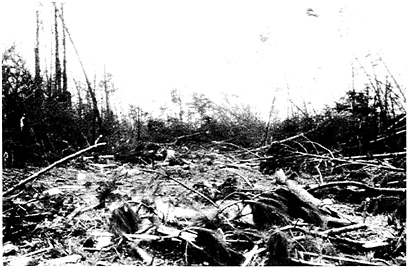
FIGURE 14-6 Typical roadway immediately after passage of Hugo. Courtesy of Southern Building Code Congress International, Inc.
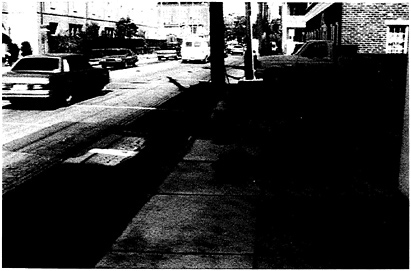
FIGURE 14-7 Traffic signal downed by wind.
Probably the most visible transportation lifeline failure was the Ben Sawyer Memorial Bridge (Figure 14-8), which connects Sullivans Island and the Isle of Palms to the mainland. The bridge failure caused access problems after the storm, which severely hampered the recovery effort on the islands.
It was estimated that it would take 12 to 18 months and $150 million to clean the debris from highway rights of way. Other repairs to roads and bridges were estimated to cost $10 million.
Airports
Airports from Charleston to as far north as Hickory, North Carolina, were affected by Hugo. The Charleston airport was closed to commercial traffic for a week after the storm as a result of damage to airport facilities, and the lack of off-site electrical power. On-site emergency generators provided sufficient capacity for lighting the runways and undamaged areas of the airport. The airfield was cleared immediately after the storm, permitting noncommercial aircraft with emergency personnel and supplies to land. Full-scale commercial service did not resume until repairs to passenger boarding facilities were completed 18 days after Hugo.
Inbound commercial flights to Charleston were suspended early Thursday, prior to Hugo's arrival at midnight. Although weather conditions were acceptable, the

FIGURE 14-8 Ben Sawyer Memorial Bridge to Sullivans Island and Isle of Palms. Courtesy of Southern Building Code Congress International, Inc.
traffic congestion caused by the evacuation prevented taxis and other ground transportation services from picking up arriving passengers. The Charleston County Aviation Authority called the various commercial airlines and requested a suspension of incoming flights for fear that passengers would be stranded in the airport during the storm.
COMMUNICATIONS SYSTEMS
Telephone
In general, telephone systems performed well during and after Hugo. The system's resiliency is likely to be attributable to the fact that about 80 percent of the service lines in the area are underground. In many interviews area residents stated that they were able to use their telephones throughout the storm.
Although the telephone system was nearly intact after the storm, several delays due to overloads in the system were reported. In many cases residents reported that it took several minutes to get a dial tone.
Some later damage to underground cables was caused by operation of heavy equipment in clearing roads and corrosion of copper wires from the saltwater storm
surge. These lines were replaced with fiber-optic cables. Damage to the telephone system was estimated to cost $60 million to repair.
Radio and Television
Radio and television service was significantly affected by Hugo. Service was disrupted at the transmitting end by loss of towers and off-site electrical power, and on the receiving end by loss of power. Cable television systems were generally out of service because of downed utility poles. The only effective means of receiving emergency broadcast information during and for several days after the storm was by battery-operated radio. In the direct path of the storm, only one AM radio station was operational. That station had its own on-site emergency generator.
Radio communication among emergency personnel was also significantly impacted by the storm. During the first day after the storm, Charleston police and firemen were limited to a communication range of only a few blocks by failure of a transmission tower. Utility personnel also complained about inadequate radio communication systems.
The major problems with water supply systems were caused by a lack of electrical power. In rural areas the lack of power meant that well pumps were inoperable. In Charleston the main treatment plant was without off-site power for 6 days. This particular plant supplies water to metropolitan Charleston, Dorchester County, Berkeley County, Folly Island, James Island, and Garden City Beach. Prior to the storm, service areas outside metropolitan Charleston were valved off of the system. During the period without off-site power, on-site generators maintained sufficient pressure in the Charleston area to prevent back-siphonage of contaminated water into the system. The on-site generators were designed to augment electric supply during peak hours and were not capable of providing enough pressure for major fire fighting or for cleaning filters at the plant.
After power was restored to the main treatment plant in Charleston, there was confusion among the public about whether the water was safe to drink. The service areas that were shut off from the main system were resupplied with water, but since these areas had not been subjected to a minimum pressure, contamination was a possibility. Charleston Public Works officials had a difficult time informing the media and public about which areas had safe water and which were questionable. Once the water supply was fully operational, there were still reports of discoloration (pale iced tea) and medicinal taste. This happened because the Charleston water plant obtains
water directly from the Edisto River, which had become contaminated with phenols leaching out of downed pine trees.
Wastewater
In rural areas and on several barrier islands, septic systems were not able to handle normal loads because of ground saturation. On some barrier islands, severe beach erosion exposed septic tanks, leading to health concerns. Figure 14-9 shows an exposed septic tank on Folly Island. In the Charleston area the wastewater treatment plant was without off-site power for 7 days. During this period the plant operated with emergency on-site generators, which were adequate for the reduced load resulting from the lack of pressure in the water supply system.
The major problem affecting the wastewater system in Charleston and the surrounding area was the loss of power to lift stations. In the area served by the Charleston Public Works, there are 80 remote lift stations, all of which lost off-site power. Only four had on-site emergency generators. The remaining lift stations had to be serviced by portable generators. It took 2 days just to clear debris from roadways so that the generators could be brought in and put into service. In a few cases overflows occurred before the portable generators could be connected. Initially, there were not enough to cover all the lift stations that had lost power, and the available generators had to be rotated among lift stations during this period. When extra portable generators were provided by the National Guard, the plugs proved to be incompatible with the outlets at the lift stations, and the generators had to be
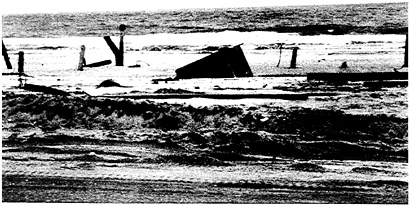
FIGURE 14-9 Exposed septic tank on Folly Island.
hardwired into the system. The first lift station to have power restored was the only one in the system that had an underground electric supply.
CONCLUSIONS
Hugo significantly affected critical lifelines throughout a large portion of South and North Carolina. With the exception of storm-surge damage on the barrier islands, the primary causes of lifeline damage were wind and windblown debris, particularly falling trees. The loss of electrical supply due to downed lines caused extended problems with other lifelines that rely on electrical power. In general, the providers of lifeline services were prepared to cope with the damage that was expected from Hugo. The problem seems to be that the actual damages were far more severe and extensive than what was expected.
RECOMMENDATIONS
The following recommendations are aimed at improving pre-storm preparation and post-storm response by utilities and other organizations that supply lifeline services:
-
Review and upgrade the existing preparation and response plans of lifeline services to include a storm with the destructive potential exhibited by Hugo. Consideration should be given to expanding and improving emergency communications systems.
-
Develop plans to shut down or restrict incoming traffic (vehicles and commercial aircraft) once an evacuation has begun.
-
Review the structural design basis for electric transmission line support structures. The review should concentrate on the embedment requirements for timber support structures. Existing timber structures should be braced, and the feasibility of replacing timber structures with metal structures should be investigated.
-
Replace aboveground electrical lines to hospitals, water and wastewater treatment plants, wastewater lift stations, and communications facilities with underground lines.
-
Install or, in some cases, upgrade on-site generators at hospitals, water and wastewater treatment plants, wastewater lift stations, and communications facilities.
-
Develop and implement a better tree-trimming program for rights of way of highways and electric power distribution systems.
-
Design roadway signs and signals for hurricane-force winds.

